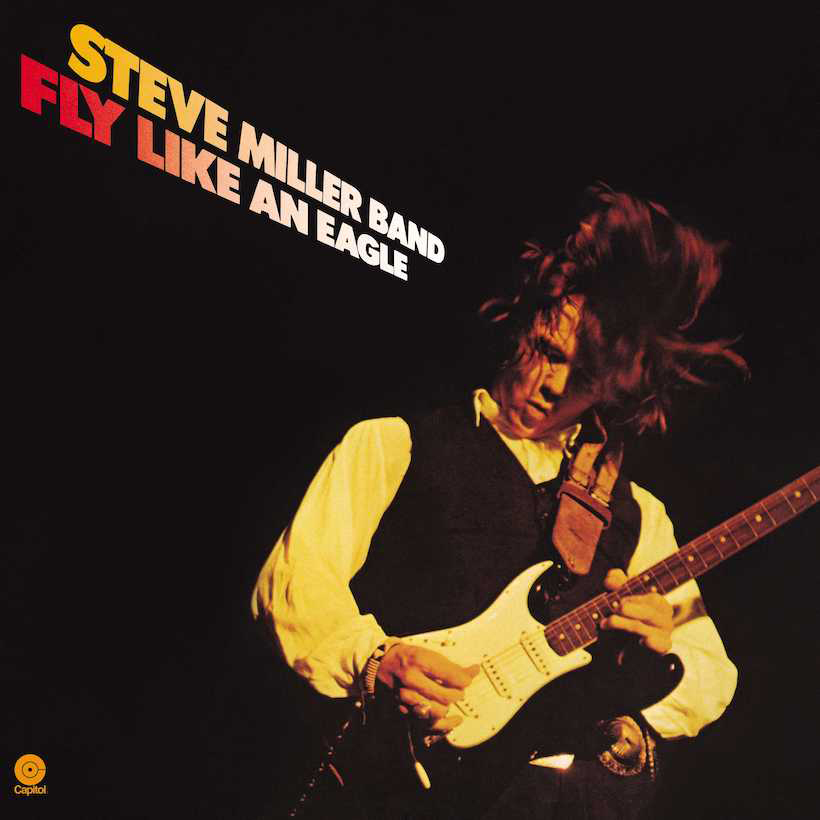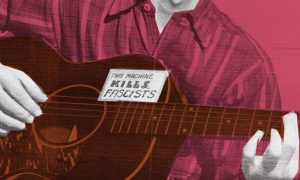With a titular track that’s recognized at first riff, Fly Like An Eagle stands the test of time as the epitome of 70s classic rock. After its release in May 1976, the album blazed its way to the Billboard chart’s No. 2 slot and introduced Steve Miller Band’s special brand of synth-driven spacey blues-rock that would spawn a string of hits and dominate the FM radio dial.
Listen to Fly Like An Eagle now.
While 1968’s Sailor is considered to be their breakthrough album, the band came close many times to mainstream success, both with 1969’s Brave New World, which just missed the Top 20 and 1973’s platinum-selling The Joker. It took the band eight years and nine albums before they finally hit the big leagues and reached a whole new level of fame.
Steve Miller had experimented with different genres throughout his career, but it wasn’t until he drew upon all of his past influences that his sound would coalesce into something greater. Steeped in the blues from his Chicago days, Steve Miller Band was always a blues band at heart that experimented with hippy psychedelia.
As a mainstay of the San Francisco music scene in the late Sixties, the band had found early success after an impressive performance at the legendary Monterey Pop Festival and caught the eye of Capitol Records. The band then secured a five-album deal in 1967 with a $50,000 advance — the most lucrative deal ever offered to an unknown band at that time.
From then on, the group churned out an album a year, but to middling results. It wasn’t until the band decided to move away from their psychedelic blues style, replacing prolonged blues jams with more traditional pop melodies, that they transformed into a hit factory three years after The Joker.
After an extended break, the band regrouped, changed their line-up with only Lonnie Turner retained from the previous album, and got to work on more than two-dozen tracks in San Francisco in 1965. By early the next year, they divvied up the songs; half went to Fly Like An Eagle while most of the remaining tracks ended up on their follow-up album, 1977’s Book of Dreams.
At that time the band included drummer Gary Mallaber and Turner on bass, but the albums also featured contributions by harmonica player James Cotton, session guitarist Led Dudek, and the Doobie Brothers’ John McFee.
Previously the band had adhered to the AOR “album as rock” sound that was prevalent at the time, but Eagle instead was singles-centric. Composed of a seemingly endless series of hit singles of differing styles, the album is a musical anthology of sorts, representing all of the music Steve Miller had ever known. From the blues to hippie-rock, country and R&B — it could almost pass for a greatest hits album.
From the spaced-out synths on the album’s instrumental opener, it was clear there was radical shift to the music of these fruitful sessions. Miller obviously had a penchant for trippy album openers that are best appreciated on a plush textile of some sorts. Just as “Song for Our Ancestors” set the tone for Sailor, “Space Intro” performed the same function on Fly Like An Eagle, announcing the arrival of the new funkified version of the titular track. Revamping the former 12-minute jam and stripping of its overt political overtones, the song soared to No.2 on the Billboard Hot 100 chart during the week of March 12, 1977, and became the band’s defining hit.
But when it comes to infectious melodies and radio-ready singles, “Take the Money and Run” and the slick guitar boogie of “Rock ‘n’ Me” take the cake. With its cinematic storyline and everyone’s favorite rhythmic device, energetic handclaps, “Take the Money and Run” kept the album on the charts for nearly two years.
Even though the Steve Miller Blues Band had dropped the “Blues” from their moniker, it didn’t mean they fully left it behind. Some of the songs that skate close to the band’s blues roots are “Sweet Maree,” thanks to harmonica stylings of Muddy Waters player James Cotton and “Mercury” which traverses its way around the blues scale.
From slow dance numbers like the Sam Cooke cover, “Send Me” to sitars on “Wild Mountain Honey,” the album is anything but predictable and even dabbles in bluegrass on “Dance, Dance, Dance.” Often overshadowed by the other hits on the album, “Serenade” is a fan favorite and really is the underdog of the album. With its driving beat and dynamic key shifts, it’s a wake-up call to action.
While it sparked so many singles, the album is more than just the sum of its parts. Eclectic and innovative with its new-fangled synthesized sounds and musical medleys, it’s still remarkably cohesive and its quadruple-platinum sales were only bested in Miller’s body of work by his 1978 greatest hits compilation.




